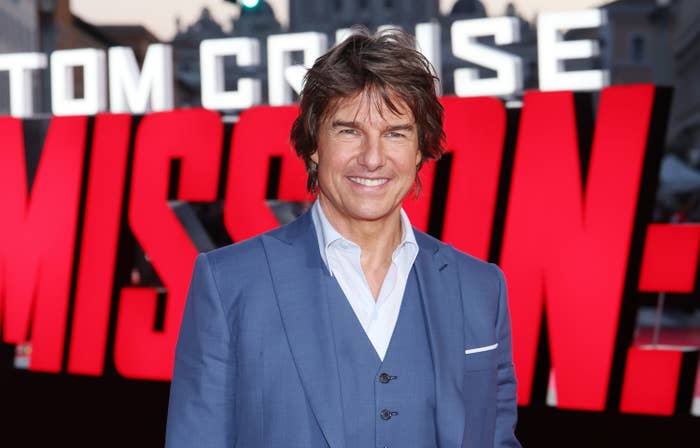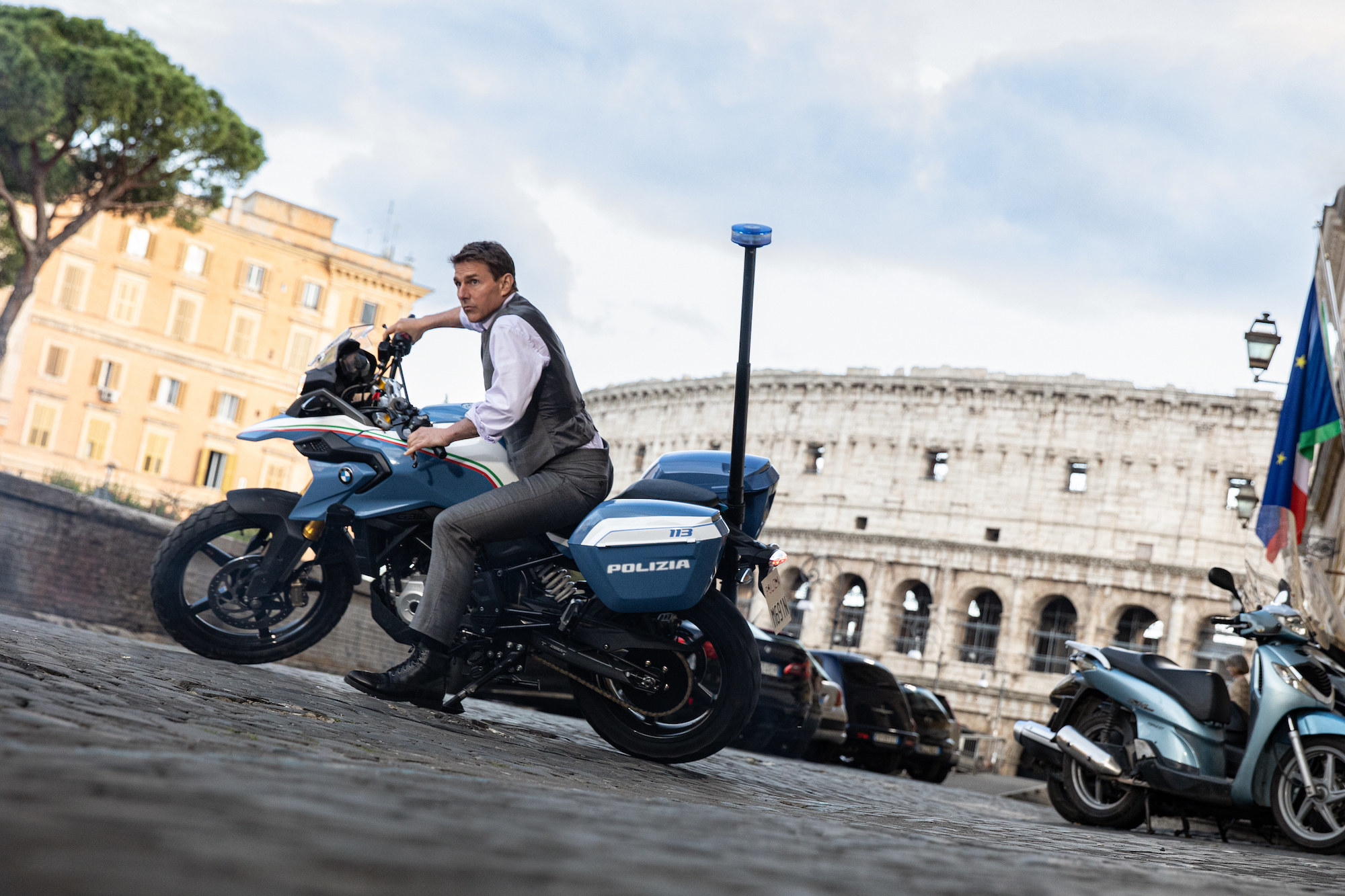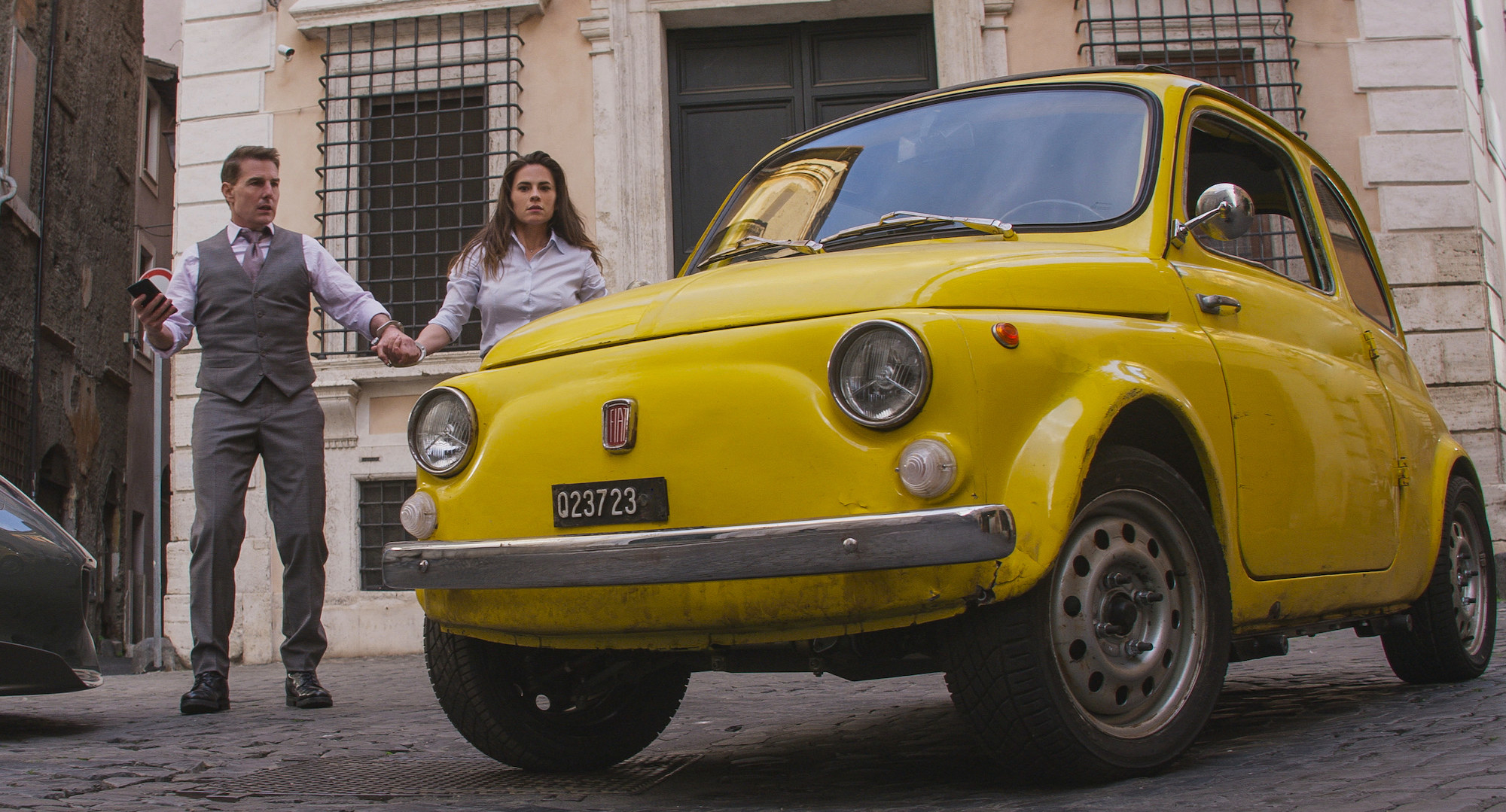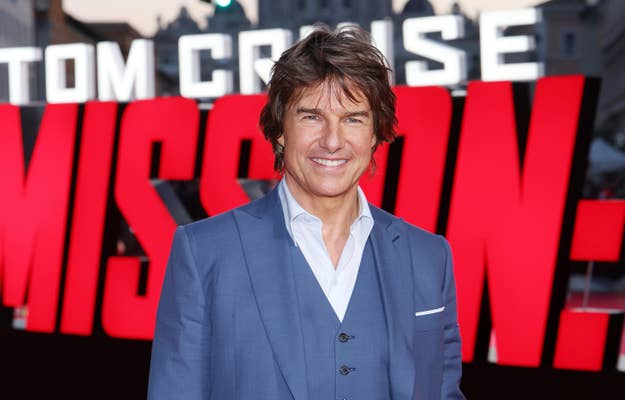
It's a blistering 90-degree summer day in Rome. One of the most historic monuments in one of the globe’s most iconic cities, the Spanish Steps, is covered from top to bottom in what has to be one of the most elaborate red carpets in history. A familiar-looking small yellow Fiat sits right alongside The Fontana della Barcaccia, surrounded by a large group of press, a swarm of TikTok influencers, and a sea of fans from all over the world.
There aren’t too many movie stars out there who could warrant a scene like this one for a movie premiere. But that’s exactly why so many people consider Tom Cruise to be the last of his kind.
Cruise saved cinema in 2022. It is really as simple as that. With the release of Top Gun: Maverick, Cruise restored a beloved feeling that completely disappeared due to the COVID-19 restrictions. Iconic film director Steven Spielberg even told the actor at the 2023 Oscar Nominees Luncheon, “You saved Hollywood’s ass and you might have saved theatrical distribution.”
View this video on YouTube
Now, over a year since the release of Maverick, Cruise is set to premiere the seventh installment of the Mission: Impossible franchise with Dead Reckoning Part One. The movie’s lead actor and producer has been playing Ethan Hunt for 27 years now with the series’ first film hitting theaters in 1997.
As things currently stand, Dead Reckoning Part One is slated to release globally on July 12 in most of the world’s IMAX theater locations. However, a little over a week later, Christopher Nolan’s Oppenheimer is swooping in and monopolizing each and every IMAX screen out there. It is no secret that Cruise prefers his films to be viewed in the most optimal way possible, and he has the success to back up his preference: Top Gun: Maverick was responsible for $110 million out of its $1.49 billion gross in 2022.
“That’s why we make it,” Cruise tells Complex on the red carpet at the movie’s premiere. “This is a big epic adventure. You’ve seen it in the best possible way with Atmos and the screen and the Dolby vision, and it’s rich and it’s made for that reason.”
Cruise went on to tell the audience that it is his passion to make movies and to entertain the fans. He went on to say that he will always continue fighting for big theaters and the experience of going to them in search of the best theatrical experience possible.

And he did. Cruise’s stunts as Ethan Hunt have become the stuff of legend over the last three decades, as the actor continues to outdo himself with every new film. This time around, Hunt and Hayley Atwell’s character, Grace, find themselves in a practical stunt-filled train sequence that will have viewers on the edge of their seats. And we’ve all seen the behind-the-scenes footage of the skydiving motorcycle leap that Hunt takes in the forthcoming film.
Complex sat down with Cruise in Rome ahead of the global premiere of Mission: Impossible Dead Reckoning Part One. To see what the star had to say about some of the film’s most intricate set pieces, doing his own stunts, and more, check out the full interview below.
This interview has been slightly edited and condensed for clarity.
View this video on YouTube
Can we start with the train sequence, one of the wildest set pieces in any Mission: Impossible movie? From start to finish, so much happens. All the characters seem to converge together at once.
That's McQ [Christopher McQuarrie]. McQ designed that whole thing and we had to build the train for that. I learned more about trains and tracks and how wide the tracks should be, the weight, the speed, how fast we can go. But, as a kid, I played with trains. McQ played with trains. We always wanted to throw a train off a cliff or blow it up. So to be able to have that opportunity to do that—and [through] his design of those things, you see the character progression throughout—it was quite spectacular.
We were in Norway shooting this. I can't believe that this is happening. How lucky are we to be here to be able to do this? With Esai Morales doing very sophisticated fights as the train is rocking back and forth at, I don't know, 50, 60 miles an hour. And the cars at the end, the stuff that we went through.
That is something that the amount of planning to be able to build those characters, the color schemes. When you look at it, you have Vanessa [Kirby] and the champagne [she wears]. You know we're also thinking about the story, and the progression of that story, and where to end that story.
So even the colors inside that car, where it ends, was very studied. It was very specific where it was going to be, where Pom [Klementieff], Hayley [Atwell], and the characters [would be], and how it ends up in that particular moment. Hayley had never done stunts like this before. When you see that car go vertical, we're sprinting up. I don't know if you've ever sprinted up a train car when it's going down?
No, I have not.
Let me tell you. If that happens to you and, hopefully, it never will, but you're sprinting up and it's going vertical. We had to dive at the end. If you see that shot, it's practical action. We are diving for those bars together. You see it. We both reach that bar just at the last second. If we don't, it wouldn't have been pleasant.

Your stunts are a major theme throughout the franchise. What are your top three stunts that you've done in Mission: Impossible?
Oh, my gosh. I don't know. I'm going to leave that to everyone else to say, but I don't know what other people think. Technically, there's just very difficult things with each one. Whether it's flying aerobatics in a helicopter… The A400 is really just building and engineering by camera. We just take everything to the next level.
It's like when I did the first Top Gun, to American Made, to Fallout, then to Top Gun: Maverick, we're building technology, and we're building knowledge on how to better shoot these things and immerse an audience in the story.
In this one, with motorcycles, even the jumps that I have and the big jump is dangerous, obviously. But even the little jumps because there's no pads—there's nothing. I'm going at high speed on very difficult terrain. What people don't see, also, is the other equipment that's following me.
I'm lining up shots while I have cars next to me. Even when I'm driving the cars one-handed with Hayley, normally, there's just cameras everywhere I can't see in front of me. Hayley got out of the car—she's like, "What?" I said, "I know, don't worry. I know how to do this. Trust me, it's going to be OK."
But it was wild. It was a wild ride. They're wild and it's really fun, but they're a lot of fun to do. But really, at the bottom of that is always story, always character. How do we invest in the audience where you're not just watching something but you're invested in it? What can we do with our story structure, our character development, and then, obviously, sound and music that invests the audience into that journey?
View this video on YouTube
You mentioned always taking things to the next level. How do you keep finding fresh ways to make the Mission: Impossible story not feel repetitive, and really take it to that next level and just reinvent it?
Thank you. Thank you. We're trying to do that, and it's something that it's always true to what, really, what the geography is telling us, what the actors are [telling us]. You know, when you have Hayley Atwell come in the movie, that allows a different kind of storytelling.
Her, as an artist, and the things that we admire about her, we've wanted to work with her for years. It allows a certain way that we can go and tell the story. It invites a different kind of storytelling. And Pom Klementieff. To be able to bring back Henry [Czerny]. The cast that we have with Shea [Whigham] and Tarzan [Davis]. Each one of them brings something that is inspiring. So we're not sitting down going, "It has to be this way." We're looking at: What is the progression of Vanessa's character? What is the progression of the story?
We're finding out what interests us as an audience, first and foremost. What kind of skills are we going to [use]? What stuff did we learn in the last one [that] can apply in this one? It just evolves in that way. We're not ever saying, "We've done this before. We've done that before." We're just looking at it going, "OK, what is this telling us?"
With the handcuff and drifting, with the doors coming off the car. It follows in a way that is—it just happens. You see what's right in front of him. McQ has a tremendous ability to be able to do that. And he has a tremendous ability to be able to write for actors.
Also, we're looking at the stuff that we admire about them as their craft, their movement, and we develop story and motion around that. Movies, the way that I learned how to make movies, I studied movies. That's what they did. They didn't just have a script and then cast an actor in a script. They built it for you, for the actor. That's how I learned how to make movies.
You're synonymous with Ethan Hunt now.
Yeah. But it's also—like if you look at my films back to Taps, I was allowed to build that character. That director, Harold Becker, saw that character that I was building, and he went, he gave it life. He's like, "I like that. I like this. Keep going with that. I like this. I like that." That's just how I instinctually learned how to make movies.
Constantly you have a script, without a doubt. It's not like we're making stuff up. You have a script; you have stuff. But if it's not working, we're not trying to jam it. We're going, "Let's shift. How fast can we shift?" That's what we're trying to do.
Why do you think it is so important for people to see this movie on the big screen and in IMAX?
That’s why we make it. It’s a different experience when you see it with a group of people. The more people, the better—when you’re seeing a movie that is made for an audience and it’s supposed to be experienced that way. This is a big epic adventure. You’ve seen it in the best possible way with Atmos and the screen and the Dolby vision, and it’s rich and it’s made for that reason.
Mission: Impossible — Dead Reckoning Part One hits theaters July 12.




